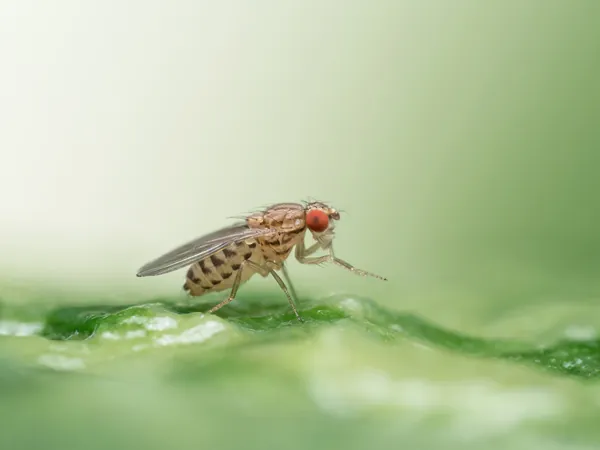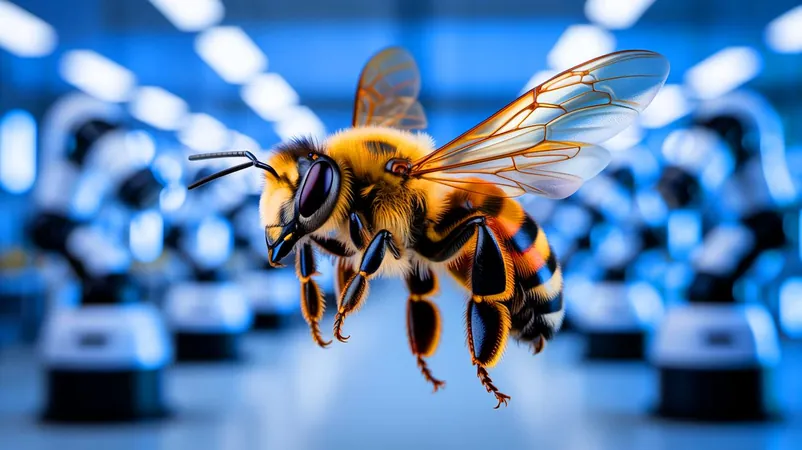
Unveiling the Secrets of Drosophila busckii: How This Fruit Fly Thrives on Toxic Food Sources!
2025-01-21
Author: Benjamin
Introduction
Researchers at the Max Planck Institute for Chemical Ecology have made a groundbreaking discovery about the fruit fly species Drosophila busckii, which has developed a remarkable tolerance to the toxic sulfur compound dimethyldisulfide (DMDS). While many insects are significantly harmed by DMDS, Drosophila busckii cleverly utilizes this compound to locate food and reproduce. This adaptation not only allows the species to thrive but also raises intriguing questions about evolutionary resilience in the face of environmental challenges.
Ecological Preferences
While many of us are familiar with the common fruit fly, Drosophila melanogaster, Drosophila busckii is a less-studied counterpart with unique ecological preferences. Found in decaying plant materials like rotting vegetables—substances that would be detrimental to other species—this fly has emerged as an invaluable model for scientists interested in understanding how organisms adapt to toxic environments.
Research Insights
First author Venkatesh Pal Mahadevan highlighted the broader implications of this research: "Unlike other fruit flies that adapt regionally to toxic foods, Drosophila busckii's global distribution provides a unique window into how species develop tolerance to hazardous substances. It opens the door for deeper study into evolutionary adaptations that remain uncharted."
Foraging Behavior
The researchers aimed to unravel not only the dietary preferences of Drosophila busckii but also the specific odors that signal optimal feeding conditions. By employing a diverse range of techniques—including the analysis of volatile compounds in decomposing plant material and examining the flies' sensory response to various stimuli—the team identified DMDS as a pivotal factor in the fly's foraging behavior.
Survival and Reproductive Success
"Drosophila busckii has an uncanny ability to detect even the faintest traces of DMDS, allowing it to thrive in environments that are perilous for other insects," Mahadevan explained. This sensitivity to DMDS not only aids in survival but also drives reproductive success, as the flies tend to lay their eggs in substrates rich in this compound.
Ecological Implications
The implications of Drosophila busckii’s tolerance are significant. Many Drosophila species fail to survive in the presence of DMDS, making this species an ecological standout. It appears that the ability to tolerate such a noxious environment reduces competition, granting Drosophila busckii access to food resources that others cannot exploit.
Biological Mechanisms
At the heart of this tolerance lies an intriguing biological mechanism. The toxic effects of DMDS are typically mediated through an enzyme complex known as cytochrome c oxidase (COX). The research team found that Drosophila busckii displays genetic alterations in this enzyme complex, indicating a strong link between these adaptations and the fly's ability to survive on toxic substrates. This alteration may serve as a vital adaptation mechanism, allowing the fly to thrive where others perish.
Potential for Broader Insights
Furthermore, understanding the COX mechanism can potentially lead to insights into how other organisms react to hazardous gases, such as carbon monoxide and cyanide. Drosophila busckii's evolutionary journey provides an exciting avenue for studying toxin tolerance in a wide array of species.
Conclusion
In conclusion, the discovery of Drosophila busckii's remarkable adaptations not only adds a new layer to our understanding of ecological resilience but also illustrates the intricate dance of evolution in response to environmental pressures. This fruit fly is not just a pest; it’s a beacon of evolutionary ingenuity worth investigating further! Will this tiny creature lead us to groundbreaking discoveries about life in toxic landscapes? Stay tuned!









 Brasil (PT)
Brasil (PT)
 Canada (EN)
Canada (EN)
 Chile (ES)
Chile (ES)
 Česko (CS)
Česko (CS)
 대한민국 (KO)
대한민국 (KO)
 España (ES)
España (ES)
 France (FR)
France (FR)
 Hong Kong (EN)
Hong Kong (EN)
 Italia (IT)
Italia (IT)
 日本 (JA)
日本 (JA)
 Magyarország (HU)
Magyarország (HU)
 Norge (NO)
Norge (NO)
 Polska (PL)
Polska (PL)
 Schweiz (DE)
Schweiz (DE)
 Singapore (EN)
Singapore (EN)
 Sverige (SV)
Sverige (SV)
 Suomi (FI)
Suomi (FI)
 Türkiye (TR)
Türkiye (TR)
 الإمارات العربية المتحدة (AR)
الإمارات العربية المتحدة (AR)